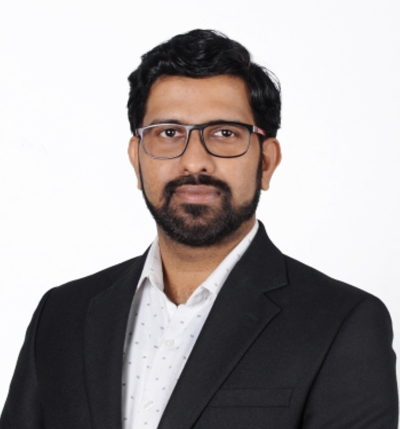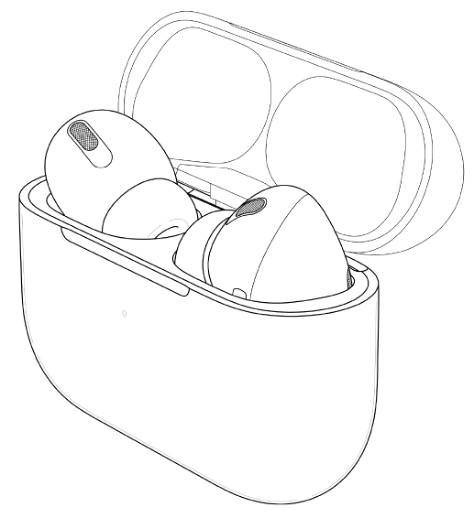
Types of Patent Applications
Now that you’ve decided to go for patent protection, it is time to choose the type of patent application that you’ll be filing. It is pertinent to understand that a patent protects the utility or functionality of a product. If the novelty of the product relates to its ornamental design, you should go for an Industrial Design (also known as a design patent in the US and other jurisdictions) instead. For the purpose of clarity, let’s use the universal term utility patent to identify patent applications defined under The Indian Patent Act, 1970. This article will help you understand different types of patent applications that may be filed under The Indian Patent Act, 1970. If you are unsure whether to go for a utility patent or an industrial design, read this article written by Mr. Harish Naidu, founding partner of Acura IP Services. To know what is a patent and the rights granted by it, read this article written by Ms. Sutapa Jana, Consulting Counsel of Acura IP Services.
Types of Patent Applications in India
There are several types of utility patent applications that an applicant may opt for depending on his/her requirements.
- Provisional Application
- Complete Application (Ordinary – Direct Application)
- Complete Application (Ordinary – After Provisional)
- Convention Application
- PCT Application
- PCT – National Phase Application
- Divisional Application
- Patent of Addition
Let’s look at each one of them in detail in this article.
1. Provisional Application
As the name suggests, provisional patent applications are “provisional” by nature. They are incomplete patent applications that offer a solution to applicants who wants to get a priority filing date and a patent pending as soon as possible. They are relatively easy to draft since they are incomplete in nature. Applicants need not provide specific details regarding the working of their invention in a provisional application. A written specification that covers the idea broadly might be enough in most cases. Additionally, the applicant may submit drawings as well. There are no specific guidelines as to the nature of the drawings, hence, the applicant may even provide rough drawings in a provisional application to support the written specification. And most importantly, the most vital part of a patent application, “the claims section”, is not required in a provisional application. Basically, an applicant can draft and file a provisional application within a few days to secure a priority date and a patent-pending tag.
Since they are incomplete in nature, these applications will not be examined by the patent office for their merits. If the formal requirements of provisional applications are met, the patent office will usually accept these applications. A provisional patent is valid for 12 months from the date of filing. An applicant is required to file a complete application before this time period ends to maintain the priority date.
Furthermore, a provisional application filed in India can be used as a base application for filing complete applications in any other member country. For example, the filing date of a provisional application filed in India can be used as a priority date when filing a corresponding non-provisional/complete application in the USA.
Pros:
- Relatively easier to prepare. Cost-effective and faster.
- Upon filing, a “patent pending” tag can be used legally.
- Can be extended internationally.
- Provides time to experiment and improve the invention.
- Patent-pending helps boost sales and investment prospects.
Cons:
- Provisional protection lasts only for 12 months within which a complete application must be filed.
Go for a provisional application, if:
- Your budget is limited for the time being, but you want to provisionally protect your idea/invention from competitors and/or copy-cats as soon as possible.
- You need a filing date as soon as possible.
- You need more time to experiment and finalize your idea/product/invention, but you want to protect the overall concept before somebody else does.
2. Complete Application
A complete application as its name suggests is a full patent application that satisfies all the requirements laid down by The Indian Patent Act, 1970 and The Patent Rules, 2003. Complete applications can be filed either directly or within 12 months of filing the provisional application. Unlike a provisional application, a complete application should include properly drafted specification, drawings, and claims as required by the Patent Act. A complete application is also referred to as a non-provisional application in some jurisdictions.
The patent office examines these applications for their merits before allowing the application for a grant. To receive a patent grant, an application should comply with every requirement laid down by the Patents Act. To know more about the requirements for a grant of the patent, read this article. To know more about the procedure followed during the post-filing stage, read this article. Once granted, the applicant gets a patent right over the invention for a period of 20 years which starts retrospectively from the date of first filing (priority date). The applicant gets legal rights to sue for patent infringement once his/her patent is granted.
Pros:
- 20 years protection upon patent grant.
Go for a complete application, if your idea/product/invention is in its final stage of development and you are positive about going for long-term patent protection.
3. Convention Application
A convention application is a form of complete application wherein your application has already been filed in some other country/jurisdiction. That is, if your first filing was not in India, you may go for a convention application in India within 12 months from the priority date established in the country of first filing.
The word ‘convention’ refers to the Paris Convention for the Protection of Industrial Property. Around 179 member states are signatories to this convention meaning almost all the countries are part of this agreement.
Exemplary Scenario: If an applicant filed a non-provisional application in the US on the 1st of January 2021, he/she can file a corresponding convention application in India within January 1st, 2022 as a convention application. Herein, the priority date of the application filed in India will be the 1st of January, 2021.
Pros:
- Almost all countries are covered by the Paris convention.
Cons:
- Corresponding applications are to be filed within 12 months from the priority date.
- Individual applications are to be filed in each country.
- No provision to pay a consolidated application filing fee.
4. Patent Cooperation Treaty (PCT) Application
Patent rights are territorial and hence there is no concept of an international patent. An applicant must file patent applications in every country he/she is interested in protecting his/her invention. Since the process of filing separate patent applications is tedious, the WTO came up with a solution that is the closest we have to an international patent application.
A PCT application is an international patent (kind of) application that allows applicants to file a single application to cover multiple jurisdictions. The initial application, known as the PCT application can be filed in any one of the designated receiving offices (RO) (the Indian Patent Office is one of the receiving offices). Applicants can pay a single international filing fee to cover the initial application costs. Thereafter, the application is examined and prosecuted by a designated International Search Authority (ISA) (the Indian Patent Office is one of the ISAs).
By default, the country which is selected as the ISA alone prosecutes the application. The applicant typically gets 30-31 months (from the date of first filing) of time to open prosecution in other countries. Typically, the applicant will get an idea about the prior-arts and the chances of a grant of his/her application by this time period. The applicant may choose to prosecute (post-filing formalities including search and examination of the application by the patent office) his/her application in other countries based on this knowledge. Usually, PCT applications are cheaper compared to convention applications if the applicant chooses to protect his/her invention in more than 4-5 countries.
To keep things simpler, in PCT filings, the initial application alone is consolidated. The post-filing formalities are to be taken up independently which is called the National Phase of a PCT application (see next sub-section).
4.1 Patent Cooperation Treaty (PCT) Application – National Phase
While a PCT application is considered a consolidated international application, the applicant has to individually prosecute the applications in all the member countries where the applicant seeks protection. The process of opening up the prosecution formalities in each member state is known as National Phase Entry.
Upon entering the national phase, the patent office of each country examines the application on its merits and decides whether to grant the application or not. The biggest advantage here is that the existing prosecution history may be considered by the patent office during the examination. If the patent was granted in the country where it was first examined, the chances of a grant may increase substantially. Furthermore, if the contracting patent offices are party to Patent Prosecution Highway, the prosecution is accelerated, and results are achieved much faster.
Example Scenario 1: An applicant filed a PCT application in the USA on the 1st of January 2019 with USPTO as the Receiving Office (RO) and International Search Authority (ISA). The application was examined and granted by the USPTO on the 1st of June 2020. Now, the applicant enters the national phase in Indian Patent Office on the 1st of May 2021 (that is, 28 months from the date of first filing). While examining the patent application in India, the Indian Patent Office, in addition to its own research, looks at the International Search Report prepared by the USPTO. The prosecution history of the application in the US is also examined by the Indian Office. Since the patent was granted in the US, the Indian Patent Office may look at the application positively and this may lead to an increased success rate.
Pros:
- Single international filing.
- 30-months of time to open prosecution in other countries.
- Cheaper than convention filing if protection is required in more than 4-5 countries (conditions apply).
- Patent prosecution highway (PPH) may be applicable leading to faster grants.
Cons:
- The initial application cost is higher than convention application.
- The prosecution is to be handled separately for all countries just like a convention application.
5. Divisional Application
A divisional application comes into the picture when the patent office directs the applicant to divide an application into two or more applications. Usually, the patent office issues such directions if the application claims more than one invention. According to The Indian Patent Act, 1970, each application can protect only a single invention (Section 10(5) – Unity of Invention).
6. Patent of Addition
Ideas are not constant, they keep evolving. Inventions that result from those ideas keep evolving as well. Section 54 of The Indian Patent Act, 1970 provides a solution to inventors who wish to protect improvements to their existing patents. The improvement can be patented as a patent of addition. The concept of protecting improvements to existing patents are used around the world to keep up with updates to products and processes. In the United States, such applications are known as Continuation Applications or Continuation-In-Part (CIP) Applications.
Conclusion
The Indian Patent Act, 1970 provides applicants with an array of options to protect their inventions depending upon the applicant’s requirements. While the amount of information available may be overwhelming, an experienced Patent Attorney can efficiently help you in choosing the right option for you based on your requirements. In addition, the Patent Attorney will help you in preparing a written specification, drawings, and the necessary forms for filing your patent application in the Indian Patent Office. The attorney will help you prepare the application according to the provisions laid down in The Indian Patent Act, 1970, The Patent Rules, 2003, and the Patent Cooperation Treaty. If you require any help in choosing the right application type, feel free to make an appointment and contact us.

About The Author
Gopikrishnan Mukundan
Adv. Gopikrishnan Mukundan is an Intellectual Property Attorney and a registered Patent/Trademark Agent.

Interpretation of Section 3(i) of the Indian Patent Act, 1970 in the Context of Non-Invasive Prenatal Testing
Introduction The advent of Non-Invasive Prenatal Testing (NIPT) has revolutionized…

Branded Medicines vs. Generic Medicines: The Role of Patents
In the pharmaceutical industry, the distinction between branded and generic…

Utility Patents vs Design Patents (Industrial Designs)
While the definition of Patent merely covers…
Categories
Recent Discussions
Interpretation of Section 3(i) of the Indian Patent Act, 1970 in the Context of Non-Invasive Prenatal Testing
Introduction The advent of Non-Invasive Prenatal Testing (NIPT) has revolutionized prenatal diagnostics, enabling expectant parents to assess the genetic health of the fetus…
Recent Discussions
Branded Medicines vs. Generic Medicines: The Role of Patents
In the pharmaceutical industry, the distinction between branded and generic medicines is an essential one. Understanding this distinction is crucial not just for…
Tags
- AI
- brand name
- brand protection
- Case Study
- challenge to patent
- complete specification
- Condonation of Delay
- confidential information
- Convention Application
- Copyrights
- design patents
- designs
- FER
- Government Regulations
- India patent
- india trademark
- indian patent office
- indian patents
- Industrial Designs
- innovation protection
- Intellectual Property
- Intellectual Proporty Rights
- International Patents
- international trademarks
- IP
- ipr
- Legal Analysis
- Legal Interpretation
- Madras High Court
- madrid application
- madrid protocol
- Medical Diagnostics
- National IPR Policy
- Opposition
- patent agent
- patent attorney
- patent claims
- patent drafting
- Patent Eligibility
- patent filing
- patent filing in academic institutions
- patent filing in india
- patent law
- patent law basics
- patent litigation
- Patent meaning
- Patent opposition
- patent pending
- patent registration
- patenting in academic institutions
- Patents
- Patents vs. Trade secrets
- PCT
- product patent
- protecting software
- provisional patent
- revocation
- Section 3(i)
- software copyright
- software patent
- software patents
- Technology
- Trade Secrets
- trademark
- trademark filing
- trademark filing in india
- trademark filing in us
- trademark law
- trademarks
- Types of Patents
- us trademark
- utility vs design
- What is a patent
- What is patent


